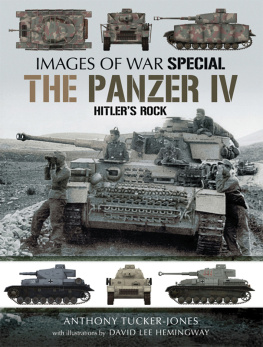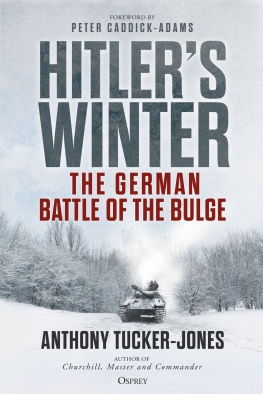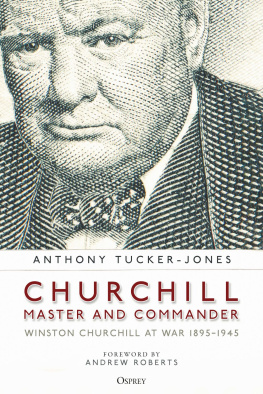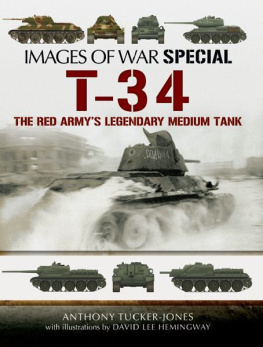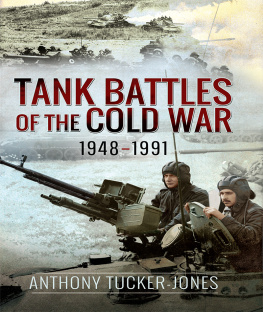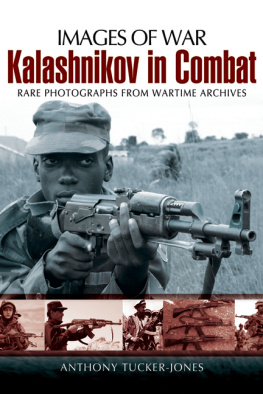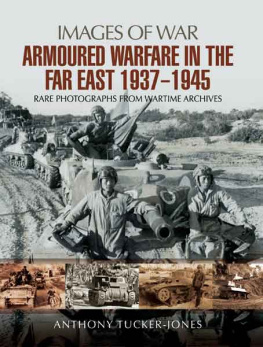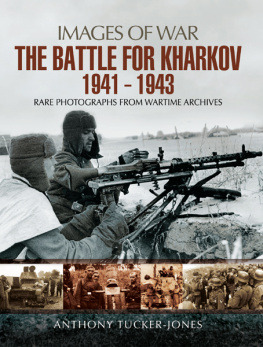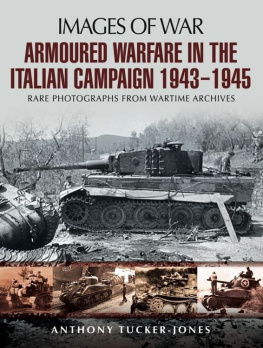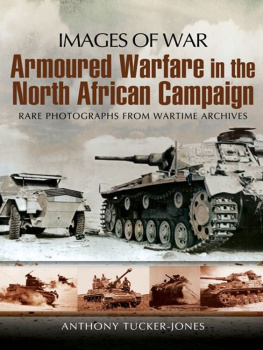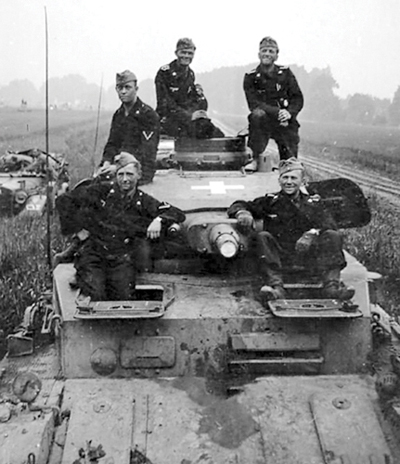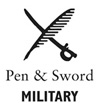
IMAGES OF WAR SPECIAL
THE PANZER IV
HITLERS ROCK
Smiling and confident-looking black-clad panzertruppen with their Panzer IV Ausf B in Poland in 1939.
IMAGES OF WAR SPECIAL
THE PANZER IV
HITLERS ROCK
ANTHONY TUCKER-JONES
Illustrated by
David Lee Hemingway
First published in Great Britain in 2017 by
P EN & S WORD M ILITARY
an imprint of
Pen & Sword Books Ltd,
47 Church Street,
Barnsley,
South Yorkshire.
S70 2AS
Copyright Anthony Tucker-Jones, 2017
A CIP record for this book is available from the British Library.
ISBN 978 1 52670 225 8
eISBN 978 1 47385 676 9
Mobi ISBN 978 1 47385 677 6
The right of Anthony Tucker-Jones to be identified as Author of this Work has been asserted by him in accordance with the Copyright, Designs and Patents Act 1988.
All rights reserved. No part of this book may be reproduced or transmitted in any form or by any means, electronic or mechanical including photocopying, recording or by any information storage and retrieval system, without permission from the Publisher in writing.
Pen & Sword Books Ltd incorporates the Imprints of Pen & Sword Aviation, Pen & Sword Maritime, Pen & Sword Military, Wharncliffe Local History, Pen & Sword Select, Pen & Sword Military Classics and Leo Cooper.
For a complete list of Pen & Sword titles please contact
Pen & Sword Books Limited
47 Church Street, Barnsley, South Yorkshire, S70 2AS, England
E-mail:
Website: www.pen-and-sword.co.uk
Introduction
The more powerful Panther and Tiger tanks have always eclipsed the Panzer IV and yet it played a far more pivotal role throughout the entire course of the Second World War. Likewise it outshone its stablemate the Panzer III, which was eventually abandoned as a gun tank. As well as providing a well-rounded tank, the Panzer IV also supplied a highly versatile platform for a whole family of self-propelled guns and tank destroyers.
These different types of Panzer IV saw combat with both the German Army and the Waffen-SS in all the major theatres of operation. In addition the Panzer IV was widely deployed by Hitlers Axis allies. It was supplied in limited quantities to Bulgaria, Croatia, Finland, Hungary, Italy and Romania, as well as Spain and Turkey. In some cases it was subsequently turned against the Germans.
The British Army first encountered the Panzer IV in France in 1940, where its lowvelocity gun was not a great threat to the very heavily armoured but cripplingly slow Matilda II tank. Rommel lost a number of Panzer IV at Arras in the face of a valiant but ill-fated British counter-attack. However, in the deserts of North Africa the greater range of the early Panzer IVs high explosive shells gave it a distinct advantage before British tanks could close.
Once it was up-gunned it enjoyed an even greater advantage and came into its own as a gun tank. Luckily for the British the latter were never deployed in great numbers in Libya and Tunisia. In Russia and Normandy it was a different matter and the Panzer IV became the workhorse of the panzer divisions. On the Eastern Front the Panzer IV ultimately proved a worthy adversary of the highly-respected T-34 medium tank.
Although the Panzer IV went into production in the late 1930s, there were 50 per cent less than Russias brand-new T-34 by 1941. Nor was it produced in significant quantities until late 1942. Despite going on to form the backbone of Hitlers panzer divisions, the Panzer IV actually started life as an infantry support tank and was not intended as a battle tank. Its low-velocity gun, also fitted to the Sturmgeschtz III, was designed to fire high explosive rounds and not armour piercing. Nonetheless, Hitlers early Mk IVs initially proved useful during his Blitzkrieg into the West and Russia.
While the Panzer III was a good design at the start of the war, it rapidly became clear that its 50mm anti-tank gun was inadequate against the newer Soviet tanks armed with a 76.2mm gun. This 50mm gun had a much higher velocity than the weapon on the Panzer IV. Therefore it was obvious soon after the invasion of the Soviet Union that the T-34 outmatched both the Panzer III and the Panzer IV. This inevitably led to an arms race as both sides sought to produce a more effective tank killer. In addition to up-gunning the Panzer IV, to counter the T-34 the Germans came up with the Tiger and the Panther but these were never built in decisive numbers.
While the Panzer III was completely given over to assault gun production, the upgunned Panzer IV was kept in production as a gun tank, seeing combat in one form or another throughout the whole of the Second World War. The Panzer IV had an ardent supporter in General Heinz Guderian in his role as Inspector-General of Armoured Troops. It was he who lobbied to keep it in service even when newer types of panzer were being put into the field. Guderian never saw the over-engineered Panther and Tiger as viable solutions to the panzer divisions problem warding off ever-growing numbers of enemy tanks.
In fact, despite Nazi engineering ingenuity, they were never able to dispense with the Mk IVs services, which became the equivalent of the Russian T-34 and American M4 Sherman. However, although it appeared in a number of successful guises, the Mk IV was never up-gunned to the extent that it became a decisive weapon in the same manner that the later T-34/85 tank did.
There were ten different production models of the Panzer IV essentially they all looked the same, though the last four types sported a very distinctive long-barrelled anti-tank gun. It was these later models that were the real tank killers. Otherwise ongoing changes mainly related to improving the powerpack and enhancing the armour. In all some 8,500 Panzer IV were built from 1937 to 1945.
Throughout the war older models of the Panzer IV were progressively upgraded. This meant that they often had a mix-and-match of different parts, making it on occasions difficult to precisely identify photographs of retrofitted models. In addition there were three types of Panzer IV tank destroyer and a self-propelled anti-tank gun. These and other various specialized tracked armoured fighting vehicles, including self-propelled anti-aircraft guns, accounted for another 4,900 Panzer IV chassis.
As a good all-rounder the Panzer IV was a greatly respected adversary on both the Eastern and Western Fronts. It was on the battlefields of North Africas deserts, Russias steppe and Normandys hedgerows that the Panzer IV gained its tough reputation for reliability and hitting power. Such was the bravery and tenacity of the crews that Panzer IVs were even known to tackle the mighty Joseph Stalin heavy tank. Ultimately the Panzer IV proved vastly more reliable and numerous than the Tiger and the Panther. In this respect it proved to be the better of the three and therefore was arguably the best panzer of the Second World War.
Photograph Sources
All photographs in this book are sourced via the author.
Chapter One
Early Days Ausf AC
Development of Hitlers Panzer Mk IV medium support tank commenced in the mid-1930s at the same time as that of the Mk III medium tank. The latter was codenamed the Zugfhrerwagen (platoon commanders vehicle) and the former the Bataillonsfhrerwagen (battalion commanders vehicle), so were dubbed the ZW and BW series respectively. Each was assigned differing roles. As early as 1930 the German Army High Command, through the Heereswaffenamt Wa Prf VI (Army Ordnance Department 6), had requested that Krupp and Rheinmetall-Borsig each produce a support tank prototype. This had to be done secretly, along with all other tank development, because of the restrictions on German rearmament following the First World War.
Next page
